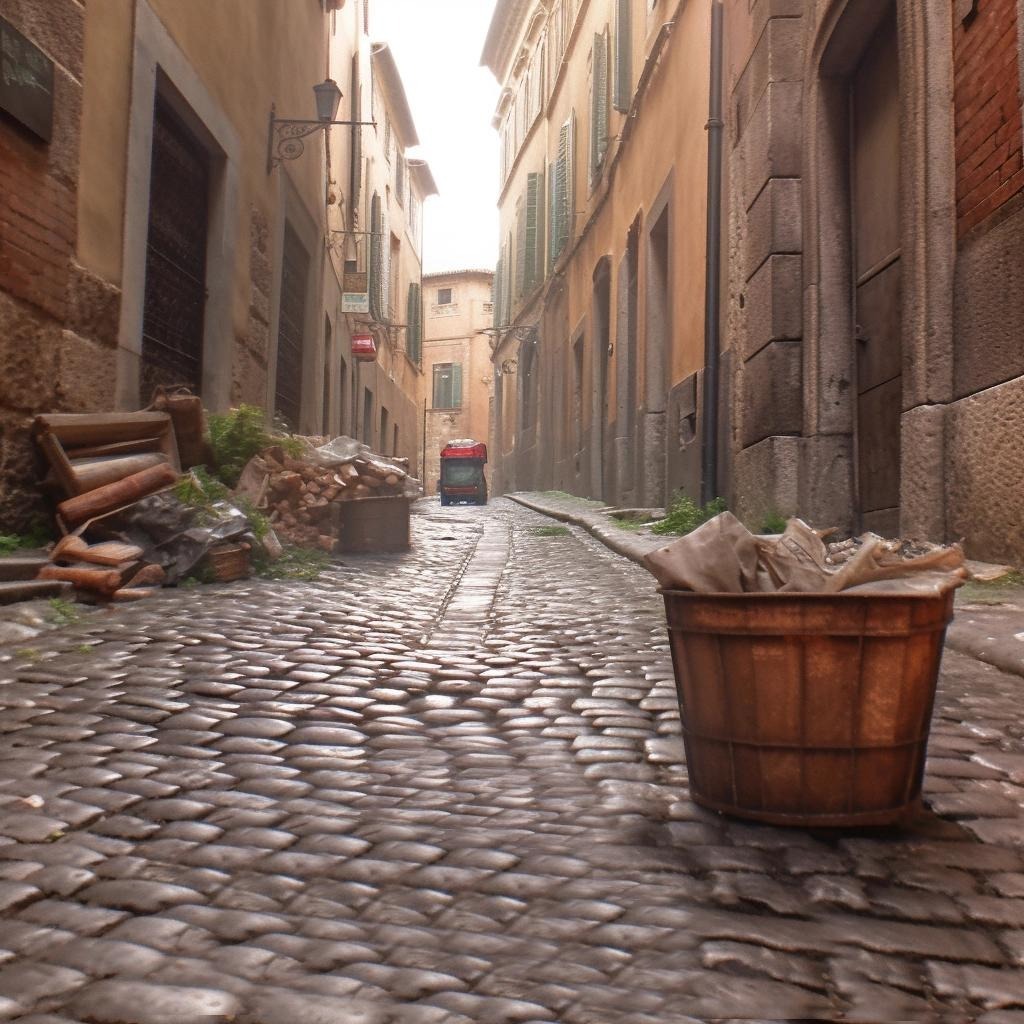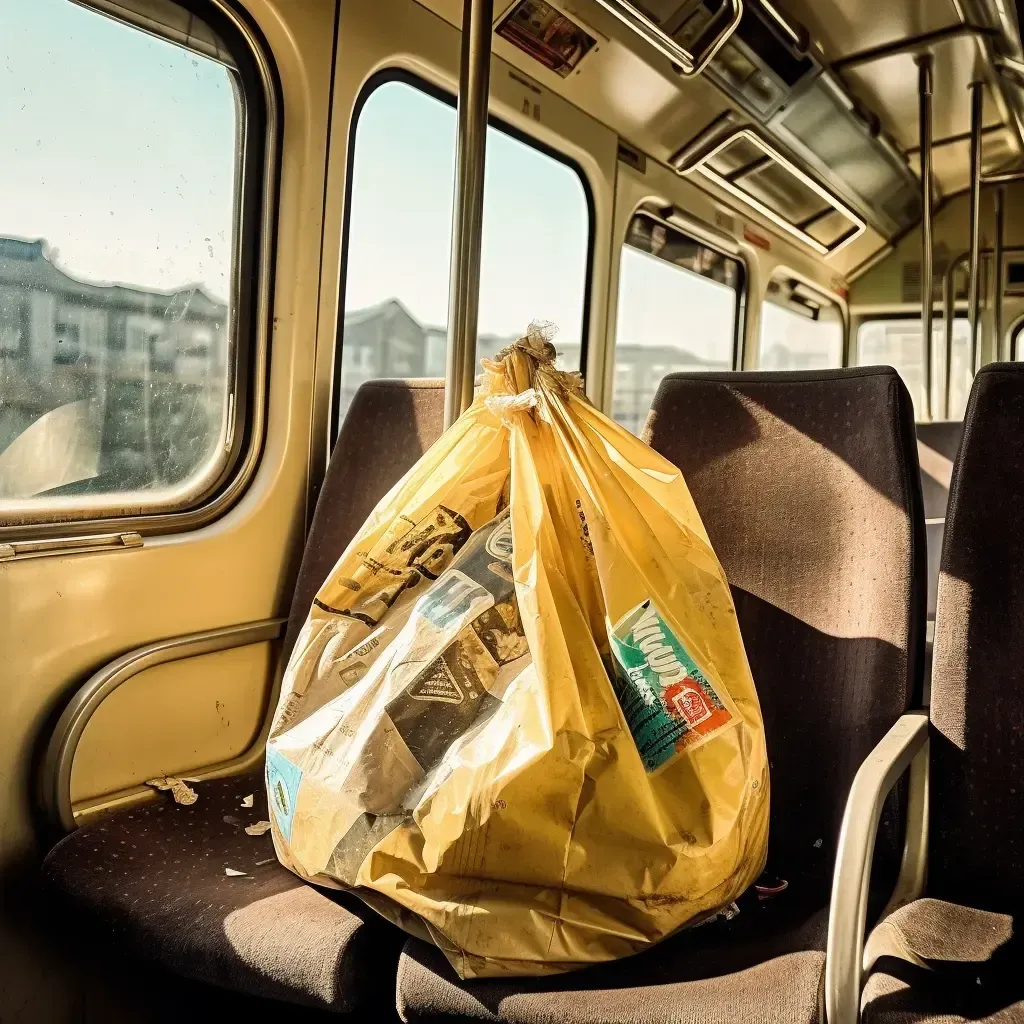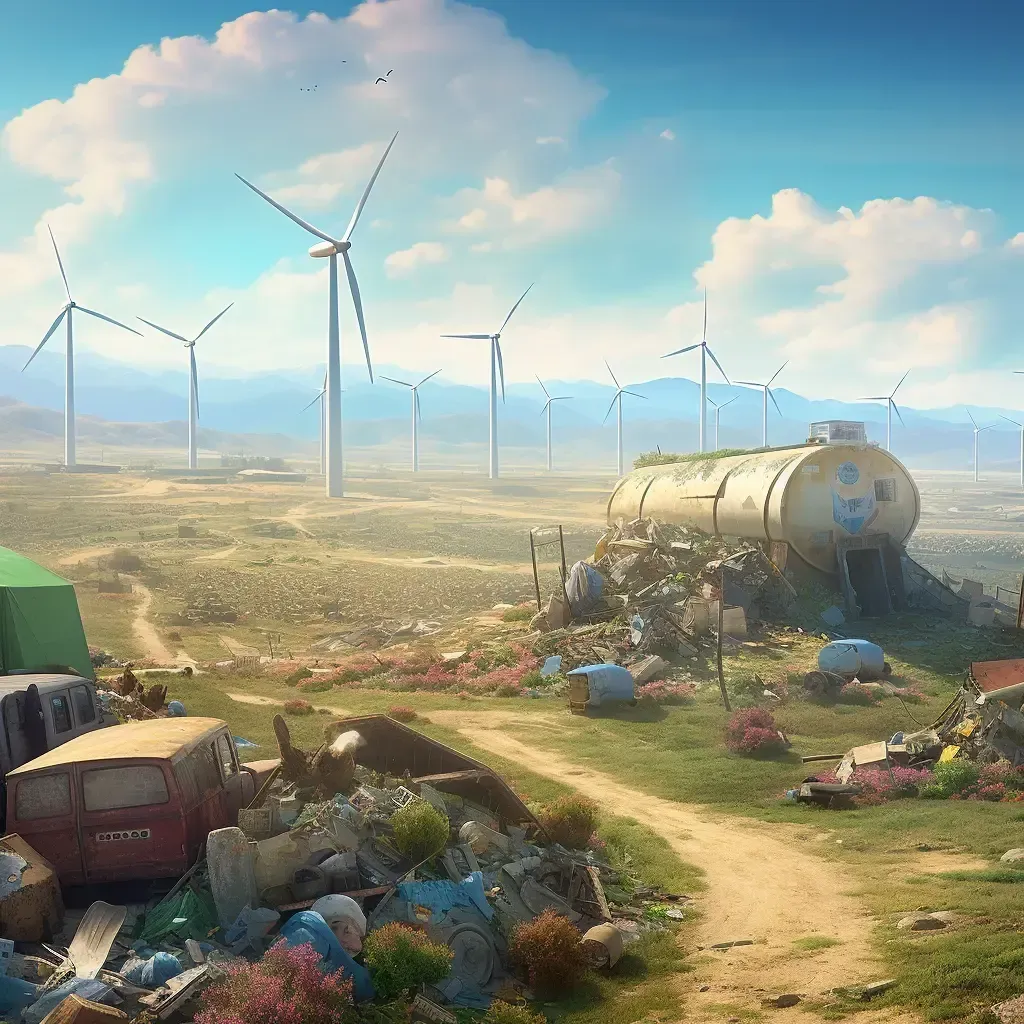Welcome, waste warriors! You’re about to dive into the hidden world of rubbish and waste, a realm often overlooked, yet crucial to the health of our planet. Grab your metaphorical shovel – it’s time to dig deep into the mysteries and marvels of waste management.
Welcome to Swann Rubbish Removal, where we believe in keeping our world clean and our customers satisfied. We’re more than just a waste disposal company in Perth; we’re a dedicated team of rubbish and junk removal professionals committed to providing you with efficient, reliable, and environmentally friendly waste management solutions.
Established with the vision to make a tangible difference in the community, we’ve made it our mission to transform the way rubbish is handled, one pickup at a time. With our state-of-the-art fleet of waste collection vehicles and a team of highly trained professionals, we’re well-equipped to handle all your rubbish removal needs. From residential to commercial, small loads to large, we’ve got you covered
But we’re not just about picking up your trash and moving on. At Swann Rubbish Removal, we’re deeply committed to sustainability. We strive to minimize waste ending up in landfills by prioritizing recycling and reusing waste wherever possible. It’s not just about cleaning up today, but ensuring a cleaner, greener tomorrow.
About Us
With an unwavering commitment to excellence and a deep understanding of the unique challenges faced by disaster affected communities Swann Rubbish plays an essential role in the cleanup process. In this article we will explore the transformative power of rubbish removal in disaster cleanup and how Swann Rubbishs expertise contributes to the economic, environmental and community benefits that ultimately lead to a brighter future for Perth and its residents.
Swann Rubbish Removals are professionals who play a vital role in rubbish removal, recycling, junk removal and waste management, contributing to a clean and healthy environment.
They are responsible for collecting, transporting, and disposing of various types of waste from households, businesses, and construction sites while adhering to local regulations. In Perth, Swann Rubbish is a leading rubbish removalist dedicated to providing top-notch waste management services at affordable prices.
With their professional team and customer-centric approach, Swann Rubbish is an ideal choice for both residential and commercial waste disposal needs. If you need a rubbish removalist now contact Swann Rubbish at 041 443 4257.

Kanne Smith is the founder and operator of Swann Rubbish Removal, a waste management and rubbish removal company in Perth Western Australia.
Let’s talk Rubbish!
The History of Waste Management
Our story begins in the annals of ancient history, unfolding within the cradle of civilization. To truly appreciate the journey of waste management, we must transport ourselves back to the bustling streets of Rome circa 200 AD.
In those times, Rome was a sprawling metropolis, a testament to human ingenuity and ambition. Yet, with great urbanization came great amounts of waste. The Romans, always the pragmatic innovators, noticed the burgeoning problem and tackled it head-on. They were among the first civilizations to develop a structured system of waste management.
Imagine this – you’re strolling through the cobblestone streets of ancient Rome, amidst the chatter of merchants and the clang of the blacksmith’s hammer. Amidst the daily hustle and bustle, you notice an unusual sight – public trash bins! This was an integral part of Rome’s waste management system. People were encouraged to discard their waste into these receptacles, which were later collected and disposed of outside the city limits.
Fast forward to medieval times, and waste management took a nosedive. With a lack of organized waste disposal systems, people often dumped their waste in the streets, leading to unhygienic conditions and frequent disease outbreaks. It wasn’t until the 19th century, with the advent of the Industrial Revolution and the rapid growth of cities, that the need for structured waste management systems resurfaced.
The first garbage incinerator was invented in England in 1874, paving the way for modern waste disposal methods. In the late 19th and early 20th centuries, the focus of waste management began to shift towards public health. New York, for instance, initiated one of the first citywide garbage management systems in 1895.
In the late 20th century, the environmental impact of waste became a significant concern, leading to a shift towards recycling and the minimization of waste. Today waste management has evolved into a sophisticated, technology driven field, focusing on sustainability and the circular economy.
The Types of Waste/Rubbish/Junk
In the present day, we find ourselves dealing with a stunningly diverse array of waste types. Each one is unique, requiring its own particular management strategy, disposal practices, and considerations for environmental impact. Let’s take a closer look at some of these.
Municipal Waste: Also known as household waste or domestic waste, municipal waste consists of everyday items that we discard. This includes packaging, food scraps, furniture, clothing, bottles, newspapers, appliances, paint, and batteries. Municipal waste can be further categorized into organic waste (food and garden waste), recyclable materials (paper, glass, metals, certain plastics), and residual waste (other waste that can’t be recycled).
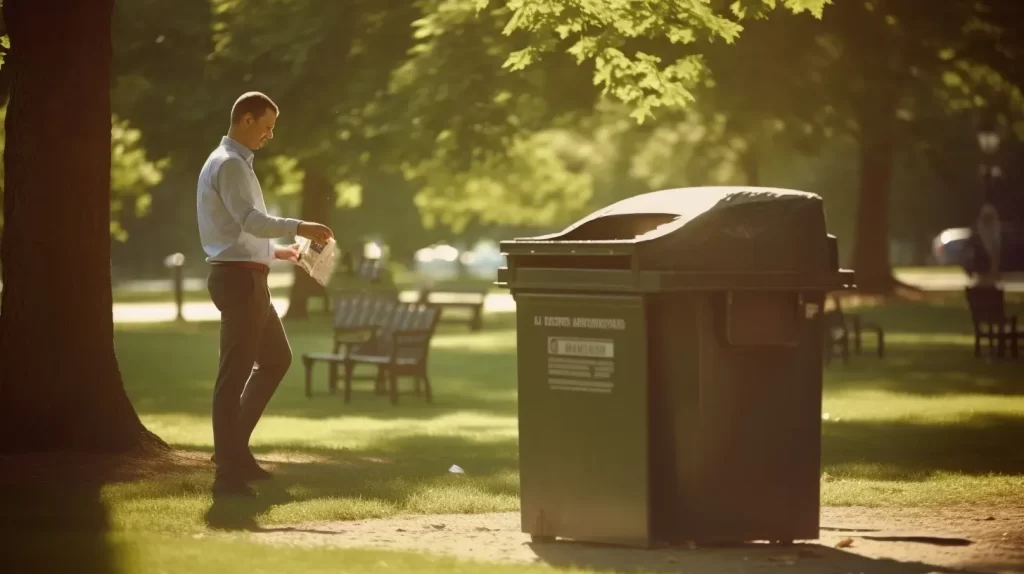
Hazardous Waste: This type of waste poses potential threats to public health or the environment. Hazardous waste can be liquid, solid, gas, or sludge. It can be discarded commercial products, like cleaning fluids or pesticides, or the by-products of manufacturing processes. To be considered hazardous, waste must be classified as ignitable, reactive, corrosive, or toxic.
Electronic Waste: Often called e-waste, this includes discarded electronic devices like computers, office electronic equipment, entertainment device electronics, mobile phones, television sets, and refrigerators. Given the high rate of technology turnover, e-waste is one of the fastest-growing waste streams. It often contains hazardous materials like lead and mercury, requiring special handling. See our E-Waste Removal service. Learn more about e-waste removal.
Organic Waste: This is waste material that comes from plants or animals and is biodegradable. It includes garden waste, fruit and vegetable peels, coffee grounds, eggshells, and more. Organic waste is often composted to create a nutrient-rich soil conditioner.
From your leftover dinner (organic waste) to your old laptop (electronic waste), every piece of rubbish has its own journey, destination, and environmental impact.
The Journey of Your Trash
So, where does your waste go after you toss it in the bin? It embarks on a journey that is more intricate and impactful than most of us realize.
First, the waste is collected from various sources – homes, offices, schools, hospitals, and factories, to name a few. This is often done by waste collection agencies like Swann Rubbish Removal, using specialized vehicles.
Next, the collected waste is transported, often by truck, barge, or train, to a waste management facility. Here, it’s sorted into different categories – recyclables, organics, hazardous waste, and landfill waste. This process can involve both manual sorting and automated sorting machines, including some that use artificial intelligence technology.
Recyclable waste is then sent to recycling facilities where materials like paper, plastic, glass, and metal are reprocessed into new products. Organic waste might be composted or sent to a biogas facility where it’s converted into energy. Hazardous waste undergoes special treatment to neutralize its harmful properties before disposal.
Landfill waste is transported to landfills where it is compacted and buried. While this is still a common method of waste disposal, it’s a last resort due to the environmental implications, including greenhouse gas emissions and potential groundwater contamination.
Finally, in some cases, waste might be sent to an incineration facility where it’s burned at high temperatures. The heat produced can be used to generate electricity.
Through this journey, our waste impacts the environment in countless ways. It uses energy, contributes to pollution, and takes up land space. However, with proper waste management practices, we can mitigate these impacts and strive towards a sustainable future. It is a reminder that our responsibility does not end at the bin, but rather continues throughout the life of our waste. Learn more about recycling waste here.
The Life of Landfills
When we think of landfills, we might imagine a vast, chaotic pile of garbage. However, the truth is much more complex and engineered. Let’s take a detour to Landfillville, a place where a substantial portion of our waste ends up.
Modern landfills are not just holes in the ground filled with trash. Instead, they are carefully designed and managed to minimize their environmental impact.
First, a suitable site is selected, taking into account factors like local geology, groundwater, and proximity to populations. Next, the landfill site is prepared. This involves digging a large pit and lining it with a durable, impermeable material, often a heavy-duty plastic. This liner prevents leachate, the liquid that oozes out of the waste, from seeping into the ground and contaminating groundwater.
Landfills also include a system to collect and treat this leachate. This usually involves a network of pipes that transport the leachate to a treatment facility.
On top of this, modern landfills have a gas collection system. As organic waste breaks down, it produces gases, primarily methane, a potent greenhouse gas. To prevent this gas from escaping into the atmosphere, it’s captured through wells drilled into the landfill. This captured methane can then be used to generate electricity or heat, converting a harmful byproduct into a useful resource.
When a landfill reaches its capacity, it’s capped with another liner and covered with soil. Grass is often planted to prevent erosion and create a more pleasing aesthetic. However, the landfill’s life doesn’t end here. It must be monitored for many years to ensure the integrity of the cap and to manage the gas and leachate systems.
Despite these efforts to minimize environmental impact, landfills still pose challenges. They take up large areas of land, can harm local wildlife, and emit greenhouse gases. Moreover, we’re running out of space for new landfills. As our waste generation increases, so does the need for landfill space.
The Truth about Recycling
Recycling is a crucial part of waste management. It gives our waste a second life, conserves resources, and reduces the need for new landfills. But there’s a harsh truth we must face – not all of our waste is recyclable, and not all recyclable waste is actually recycled.
Let’s break it down. First, not everything can be recycled. Items like plastic bags, Styrofoam, and certain types of plastic containers often can’t be processed by recycling facilities. Moreover, many items that could technically be recycled, like electronics or certain types of glass, require specialized facilities that aren’t always available.
Even items that can be recycled often aren’t. One reason is contamination. If recyclable materials are mixed with non-recyclable items or dirty, they can’t be processed. For example, a pizza box with grease or food residue can’t be recycled even though it’s made of cardboard.
Another factor is market demand. Recycling is a business, and like any business, it depends on supply and demand. If there’s no market for recycled materials, they might end up in a landfill regardless of our best intentions.
This sobering reality underscores the importance of the first two R’s: Reduce and Reuse. By reducing our consumption and reusing items as much as possible, we can decrease our reliance on both landfills and recycling. It’s a reminder that the most effective waste management starts with our choices as consumers.
Innovative Ways of Managing Waste
Innovative ways of managing waste have been a focus for many industries and startups around the world. Some of the key trends and innovations in waste management as of 2023 include:
Artificial Intelligence (AI): AI is increasingly being integrated into waste management workflows to automate processes and improve operational efficiency. This includes the use of AI-based solutions to determine optimal routes for garbage trucks, saving fuel costs and avoiding traffic delays. AI-driven autonomous garbage trucks are also being developed to reduce the risk of occupational injuries to drivers. Moreover, computer vision and machine learning algorithms are being utilized for smart sorting to distinguish between different types and sizes of waste materials, increasing the accuracy and speed of sorting, especially for plastic recycling companies. AI-based platforms are also used to maintain safe operations by constantly monitoring operating conditions in hazardous waste facilities.
Robotics: Robotics, in combination with sensors, computer vision, and AI, are being used to automate waste segregation practices. Industrial robots can work faster and lift heavier objects compared to humans, and can also pick plastics from beaches and oceans. Drones are being used to monitor landfills, detect any toxin or radiation leakage, and monitor carbon emissions and pollution levels around landfills to enable proactive litter management
Internet of Things (IoT): IoT-based waste management systems facilitate real-time waste bin tracking, timely waste collection and disposal, and prevent dumpster explosions and fires through temperature monitoring. RFID tags used in garbage trucks allow tracking of the vehicles’ location, providing companies with highly relevant data for better decision-making and plan optimization
Circular Economy: Companies are starting to design products that have multiple life cycles instead of the traditional take-make-dispose approach, thus ensuring minimum waste by reusing and repurposing existing products into new raw materials or products.
Other trends include Advanced Recycling, Big Data & Analytics, Decomposition Technologies, and Blockchain. Startups are developing solutions such as AI-based algorithms for waste sorting, robotic recyclers, and plastic-eating microbes for plastic waste decomposition.
IoT-enabled smart waste bins and blockchain solutions for material traceability are also being explored. These innovative methods are aimed at improving the efficiency of waste management operations and reaching the goal of sustainability with minimum pollution.
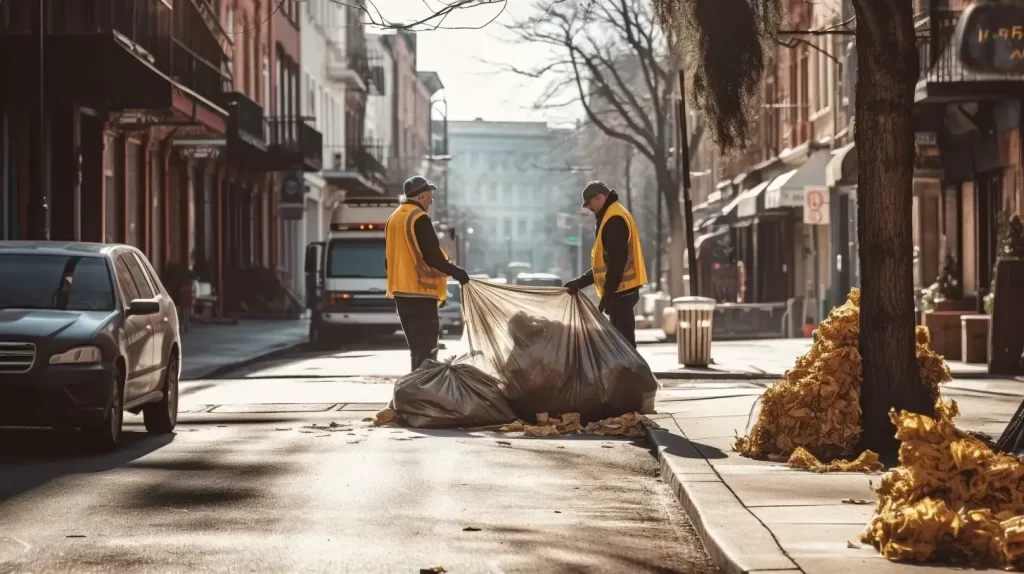
Conclusion
That’s it, rubbish rangers we’ve reached the end of our waste expedition! We’ve explored the strange and surprising world of waste, a world that is far more complex and fascinating than most of us realize. Hopefully, we’ve given you a new perspective, and maybe even inspired you to take action. After all, each of us plays a vital role in this story – the story of our waste, our planet, and our future.
So, the next time you toss something in the bin, remember: that’s not the end of its journey. It’s just the beginning.
